Edgy, polarizing, and futuristic – these are the words that would describe the BMW Concept XM when it was introduced in November 2021. But more than anything, it was announced then that the production version of the show car will be the next standalone M model, the very successor to the legendary M1 from the ‘70s.
Now it’s here, the production-spec BMW XM and as you can see, the road-going version largely carries the same polarizing design of the concept, armed with aggressively angular, split headlights, and a plug-in hybrid powertrain – millennia far from the mid-engined forefather.
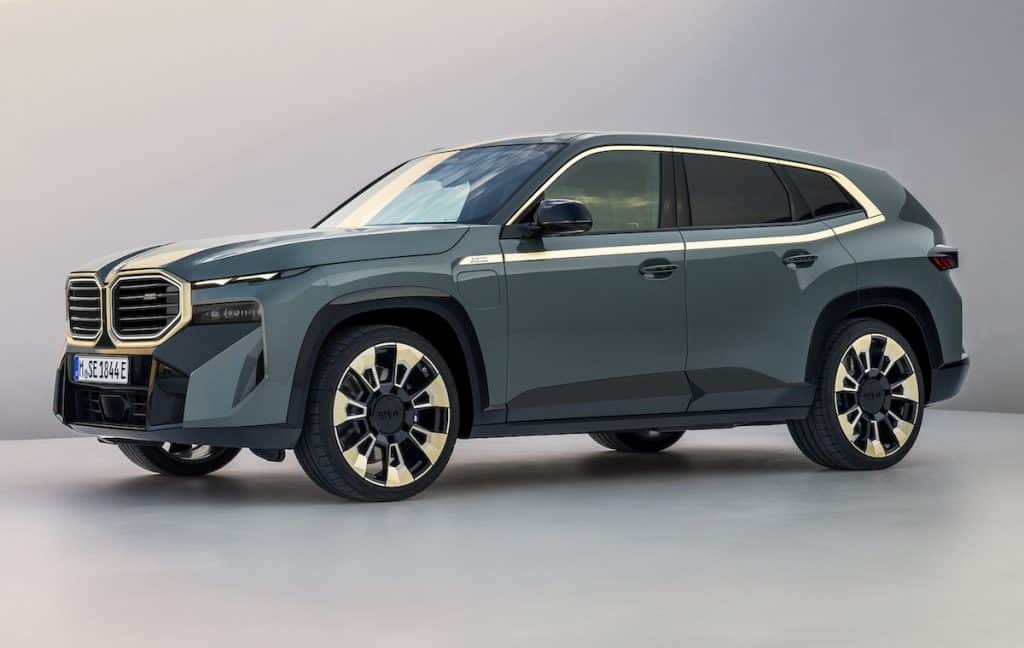
Obviously, the BMW XM is far from being a direct successor to the coupe. The SUV craze paved way for the creation of a high-riding M model, as is the other high-performance SUVs of late.
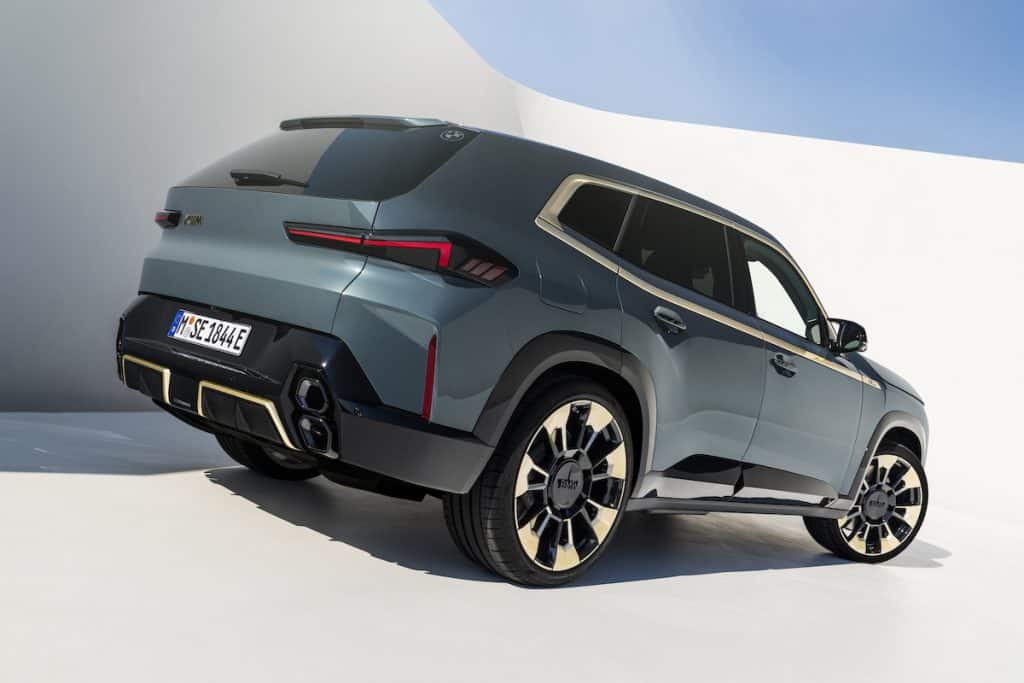
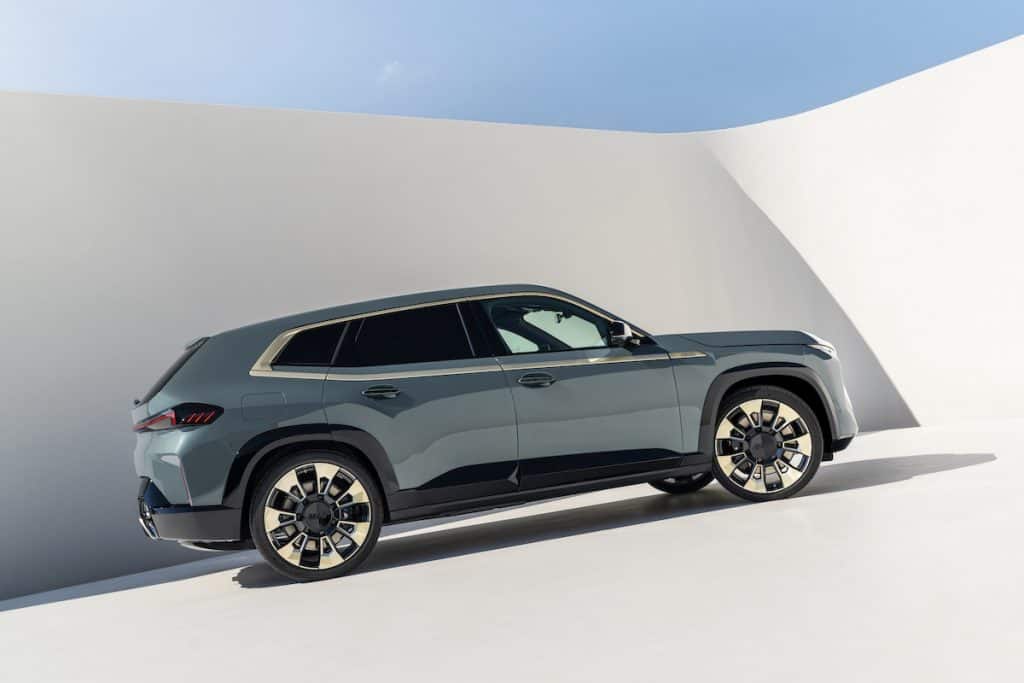
The XM is positioned above the current behemoths in the BMW range, hence donning massive proportions. Everything is big about the XM, most notably the 23-inch wheels with 275/35 R23 front and 315/30 R23 rear tires that come as standard.
As a throwback to the M1, the XM does come with two roundels at the back but this is pretty much where the similarities end. As with all fully fledged M cars, the XM has a quad exhaust system, arranged in a vertical stack. Muscular lines populate the XM’s body, complemented by wide taillights that flank a prominent XM badge with a gold contour to echo other exterior details.
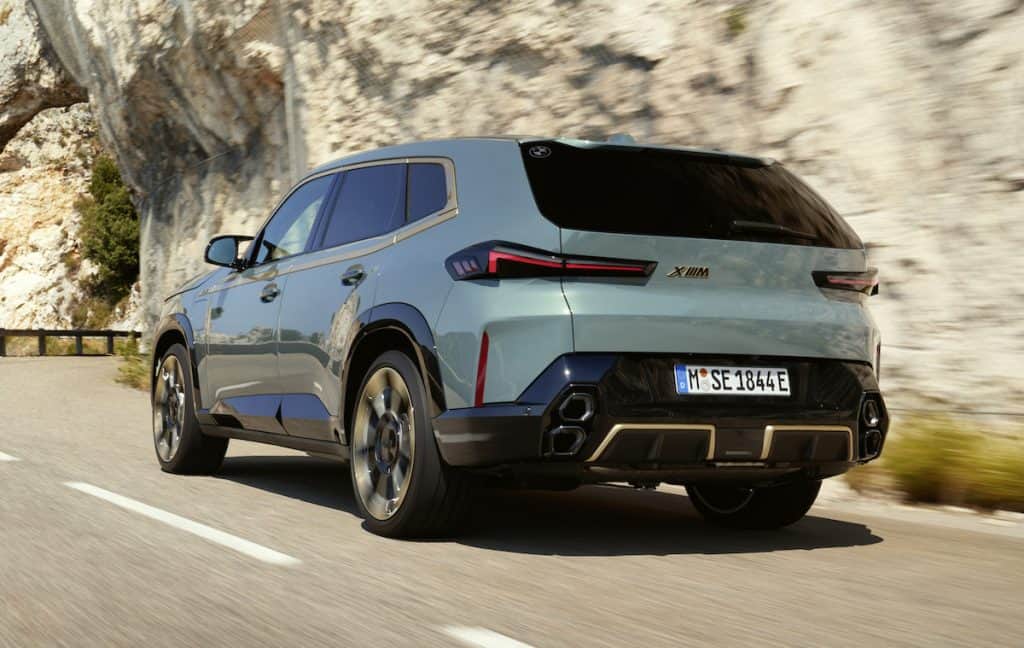
As the BMW XM is a PHEV, it has a charging port on the left-front fender, which will be the same story as the next-generation M5. It comes with BMW’s new S68 engine, a twin-turbo 4.4-liter V8 setup with mild-hybrid technology. Without electrification, the combustion engine is good for 483hp and 650Nm of torque. With the electric motor integrated into the eight-speed automatic transmission, the XM can churn out a total of 644hp and 800Nm of Earth-moving torque. This enables the SUV to sprint to 100 km/h in 4.3 seconds. The ultimate M SUV is electronically capped at 250 km/h from the factory; add the M Driver’s Package and you can push it further to 270 km/h.
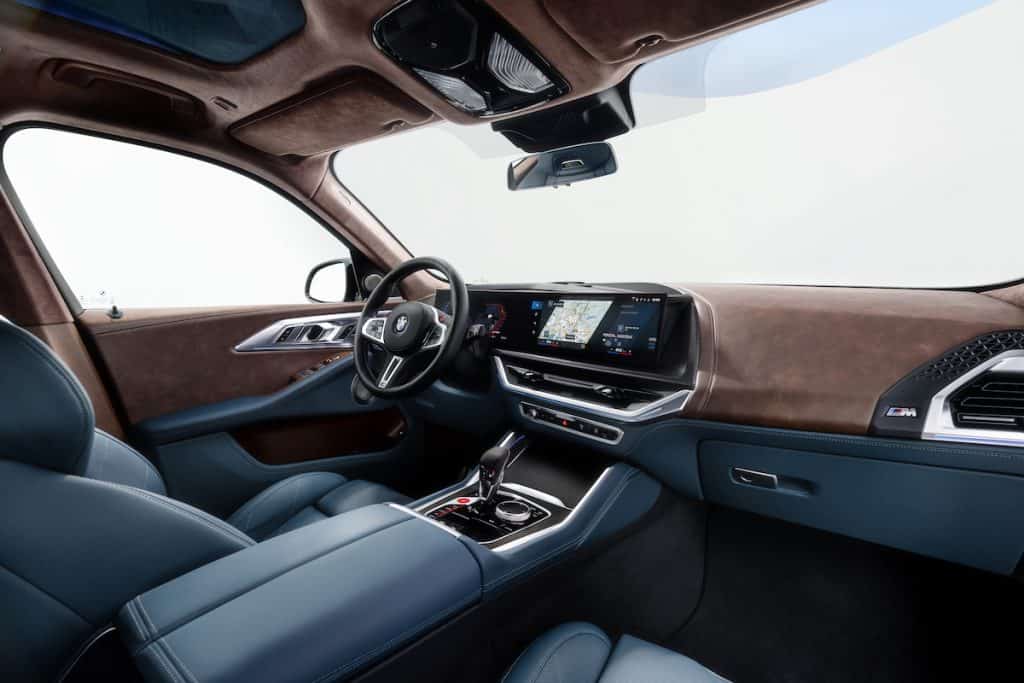
The electric motor draws power from a lithium-ion battery pack with a usable capacity of 25.7 kWh. The XM will hit 140 km/h in electric mode, and BMW estimates a full charge will last for 48 kilometers based on EPA’s testing procedures. In Europe, the top-spec M SUV has a WLTP rating of 82 to 88 kilometers.
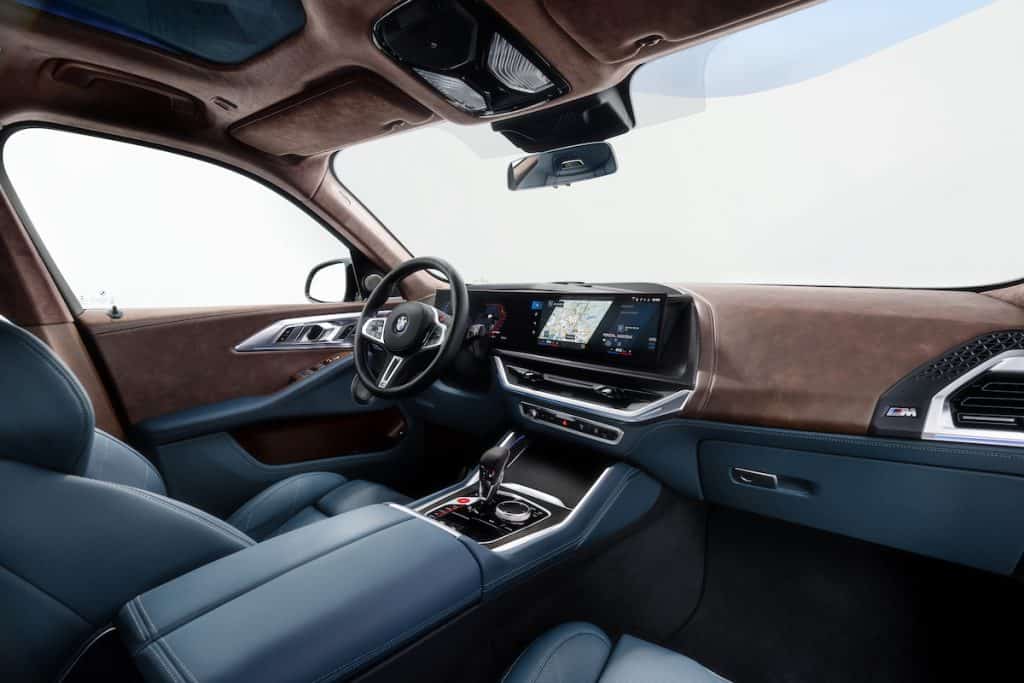
With an electric motor, battery pack, and a huge V8 engine, the XM is the heaviest production BMW ever made at 6,062 pounds. Size-wise, the XM measures 5,110mm long, 2,005mm wide, and 1,755mm tall. The wheelbase of 3,105mm is identical to that of the three-row X7, though the XM exclusively seats five people.
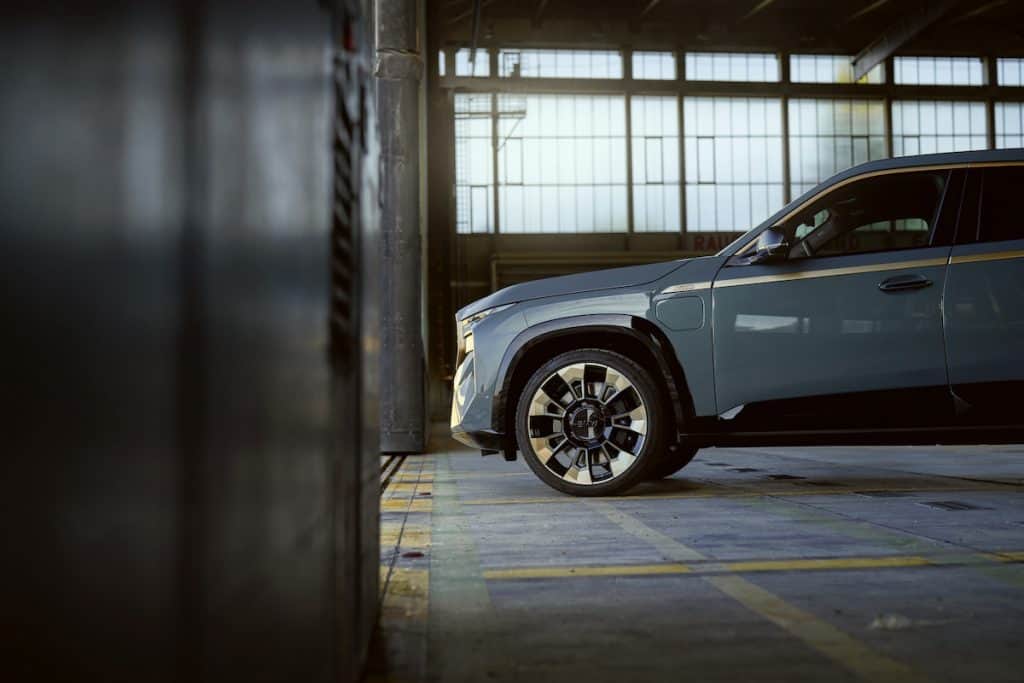
Inside, the BMW XM comes with a two-tone theme upholstered with Vintage Coffee Merino leather combined with Soft Nappa leather. The headliner incorporates over 100 LEDs for fancy light effects based on the selected driving mode. As for the infotainment, it comes with the latest iDrive 8 paired with a head-up display as standard while offering the widest array of driver assistance systems ever installed in a BMW.
BMW will start making the XM before the end of 2022 at the Spartanburg factory in South Carolina, USA. Pricing starts at $159,000 or around P9.4 million with the current exchange rates. A more expensive version, known as the XM Label Red, will arrive next year. It will be the first in a series of BMW Label models and will enter limited production in mid-2023. It’s bound to produce over 735hp and nearly 1,000Nm).
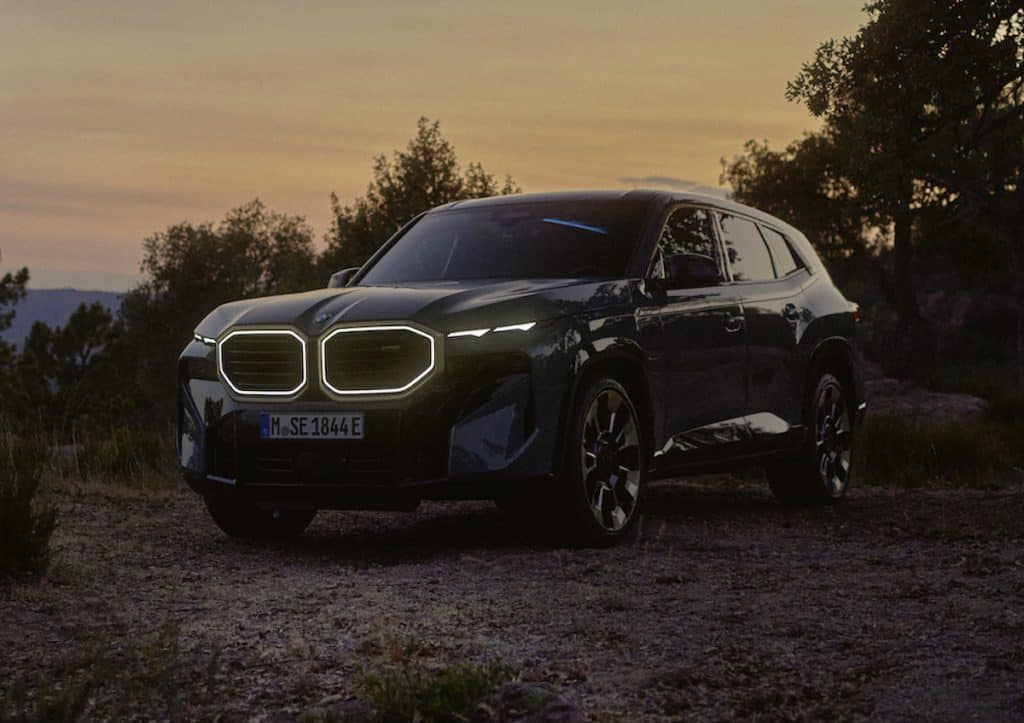
The BMW XM may be far from the legendary M1 of the ‘70s, but it is equally as game-changing for the M Division that it solely represents. Let’s just hope that it doesn’t suffer the same fate as the coupe but given the trend among SUVs and electrified vehicles, we’re not worried at all.

